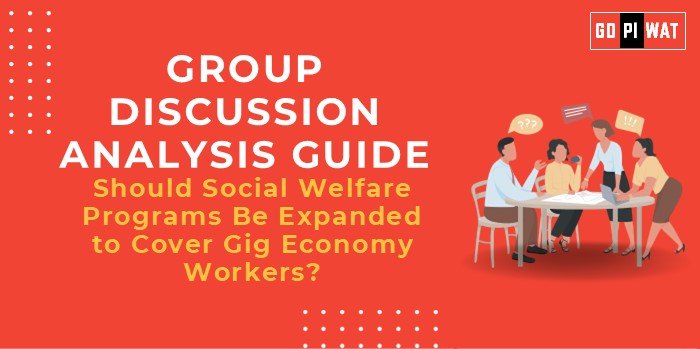📋 Should Social Welfare Programs Be Expanded to Cover Gig Economy Workers?
🌐 Introduction to the Topic
Opening Context: Gig economy workers, including drivers, delivery personnel, and freelancers, are pivotal in shaping modern economies. However, their lack of access to social welfare benefits sparks a global debate about equitable labor rights.
Topic Background: The rise of the gig economy has introduced flexibility and economic opportunities but also revealed systemic vulnerabilities for workers, especially concerning health insurance, retirement plans, and unemployment benefits. Nations like the USA and India have witnessed rapid growth in this sector, urging policymakers to address these challenges.
📊 Quick Facts and Key Statistics
- 🌍 Gig Economy Contribution (Global): $455 billion (2023) – Highlights its economic significance.
- 🇮🇳 India’s Gig Workers: 15 million+ (NITI Aayog, 2022) – A burgeoning labor force demanding inclusive policies.
- 📉 Social Security Coverage: Less than 10% globally – Underlines the disparity in worker welfare.
- 📈 Platform Economy Growth: 18% annually (ILO Report, 2023) – Indicates rapid expansion demanding systemic reforms.
🏗️ Stakeholders and Their Roles
- 🏛️ Government: Policy creation and implementation of social safety nets.
- 💼 Private Companies: Ensuring fair wages, benefits, and compliance with labor laws.
- 👩🔧 Workers: Advocating for fair treatment and social security.
- 🌍 Civil Society and Unions: Driving awareness and legal frameworks for gig worker rights.
- 📜 International Organizations: Setting global benchmarks for labor rights (e.g., ILO).
🏆 Achievements and Challenges
🎉 Achievements:
- ⏰ Flexibility and Opportunities: Over 75% of gig workers appreciate flexible work hours (Pew Research).
- 🌐 Digital Employment Generation: India’s gig platforms have created millions of jobs, especially during the pandemic.
- 📜 Global Policies Emerging: Nations like Spain have introduced “Rider Laws” mandating contracts for gig workers.
⚠️ Challenges:
- 💰 Lack of Social Security: Most gig workers lack pensions, health insurance, or paid leave.
- 📉 Income Uncertainty: Workers often face irregular pay and exploitative contracts.
- 📜 Legal Ambiguity: Gig workers’ classification as “independent contractors” denies them basic labor rights.
🌍 Global Comparisons:
- 🇪🇸 Spain’s Rider Law: Requires companies to classify delivery workers as employees.
- 🇺🇸 California’s Proposition 22: Allows companies to classify gig workers as contractors but provides limited benefits.
📖 Case Study:
- 🇮🇳 UrbanClap, India: Provides limited insurance to service professionals, showcasing partial progress.
💡 Structured Arguments for Discussion
Supporting Stance: “Expanding social welfare will ensure gig workers enjoy the same dignity and security as traditional employees, fostering equitable economic growth.”
Opposing Stance: “Mandating social welfare for gig workers may burden startups and stifle innovation in the gig economy.”
Balanced Perspective: “While expanding welfare is crucial, it should be implemented with public-private partnerships to balance worker rights and economic viability.”
🗣️ Effective Discussion Approaches
Opening Approaches:
- 📊 Data-Driven: “With over 15 million gig workers in India, their exclusion from social welfare highlights a critical policy gap.”
- 🌍 Global Comparison: “Countries like Spain have made strides in integrating gig workers into welfare schemes, showcasing actionable frameworks.”
Counter-Argument Handling:
- ✔️ Case Studies: Use examples like Spain’s Rider Law or UrbanClap’s insurance model to propose feasible solutions.
- 📈 Scalable Solutions: Emphasize shared employer-worker contributions for sustainable funding.
⚙️ Strategic Analysis of Strengths and Weaknesses
- ✅ Strengths: Provides economic opportunities for millions and flexibility in work hours.
- ❌ Weaknesses: Lacks long-term stability and faces a high risk of worker exploitation.
- 📈 Opportunities: Public-private collaborations for insurance and leveraging AI/tech to manage benefits efficiently.
- ⚠️ Threats: Increased regulatory burdens on platforms and resistance from gig platforms.
🎓 Connecting with B-School Applications
Real-World Applications:
Explore projects on labor economics, human capital management, or digital platform policies to analyze gig economy trends.
Sample Interview Questions:
- 💬 “How can governments ensure fair treatment for gig workers without stifling innovation?”
- 📜 “What role should private companies play in improving gig worker welfare?”
Insights for Students:
- 📘 Study global precedents for gig worker rights to design inclusive labor policies.
- 🌍 Examine public-private partnership models to address gig economy challenges.


